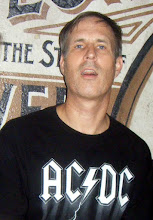This is music being made by bands that have found their way onto my radar this year, and who I feel are leading a creative underground that certainly deserves more exposure.

Clinical Trials
http://nyc.thedelimagazine.com/7739/nyc-cd-month-clinical-trials-live-studio-on-1111
With their new EP "Bleed Me" the guitar/vocalist and drummer grrrl tandem Clinical Trials steps up the noise-rock formula through the addition of orchestral and industrial elements, boosted by confident performances and songwriting.
In the record's highlight track, the suspenseful and almost scary "Whip It", the band takes the bold step of adding an unnerving brass section to the more traditional harsh guitar and rumble-crash drum sound. The soaring female vocals start out in a controlled manner but by song's end have progressed to throat shredding screams, in an ever-growing, cathartic tension buildup. That's what rock'n'roll is all about right there... The second track "American Girl" - as tense as the previous one - touches on middle-eastern rhythms for the verses, adding alienating low-toned synth bends to the mix. "Sweet Machine" is more bass guitar heavy, with a clean lively drum sound positioned against breathy come-hither vocals. References to "beauty queens" and "satisfaction guaranteed" completes the sex-for-whatever scenario. "White Fence" makes use of found audio vocal snippets (made to sound like radio transmissions) leading into a vocal delivery that pays homage to Kurt Cobain's more confessional moments. Rich organ textures pad the sonic space as lyrical points are made about "cyanide moments." If only Frances Bean would make up with Courtney – they would probably enjoy checking out this band together.
Indian Rebound
http://nyc.thedelimagazine.com/node/7760

Exploring the dimensions of New York City band Indian Rebound transports you to a world of timeless creativity. Drawing on influences that point towards the original 1960’s English invasion, there is a classic, yet still modern feel to it all. Not content to simply rework already established ideas, the band is now working on a new collection of songs that promise more creativity and a deeper lyrical imagery. Songwriter Ethan Levenson answered a few questions on just what makes this band tick.
http://www.thedelimagazine.com/FeatureView.php?artist=indianrebound
The Ice Choir

http://nyc.thedelimagazine.com/node/7819
Layers of vintage synths and buzzy analog bass lines are the new background to the smooth soulful voice of Kurt Feldman in his post-Depreciation Guild project The Ice Choir. More "passionate" than songs from the previous now defunct act, the just released new track “Two Rings” presents lyrical references to “obsidian” and “black rain”, keeping everything just mysterious enough for the dream pop genre. Kurt has masterfully encompassed the influences of New Order’s “Every-time-I-see-you-falling” bits of their classic song "Bizarre Love Triangle" (take me back to my swirling alternative rock disco dance music days!), but he is actually a much better singer than Bernard Sumner ever was. Not completely rejecting guitars, there is a sweet and slithery solo that emerges just past the three minute mark and runs under the final bits of vocals up to the end. With this new direction coming out of the NY music scene, one has to wonder if a “Dead or Alive” or “Haysi Fantaysee” revival will be next? The new 7" single is out via Shelflife joined by the b-side track "The Ice Choir."
Invisible Days
http://nyc.thedelimagazine.com/node/7444

http://thedelimagazine.com/FeatureView.php?artist=invisibledays
Invisible Days successfully blend gentle atmospherics, FX laden guitars, slithering basslines and appropriate rackety-tackety percussion with a vocal harmony that sets them apart from many other bands attempting the shoegazer genre. Combining that with songwriting that shows thought and precision, and it becomes clear (or less invisible) as to why they've grabbed The Deli's attention soon after releasing their debut single. On their song "Stewards" the vocals are placed far back in the mix, echo tinged, with strummed guitars more out front. It continues to build cathedral-like, while the drums stay routed in the here and now. "Daysleeping" takes the superior vocal harmonies even higher, bringing to mind the unforgettable gold age of "gaze" bands like Ride. The dream textures are still there, just not overpowering.
All the above = choice listening for modern times!

























